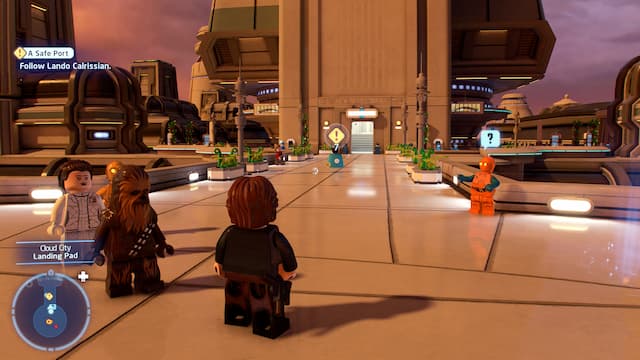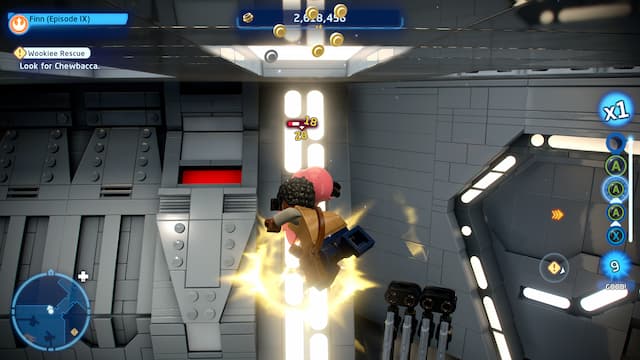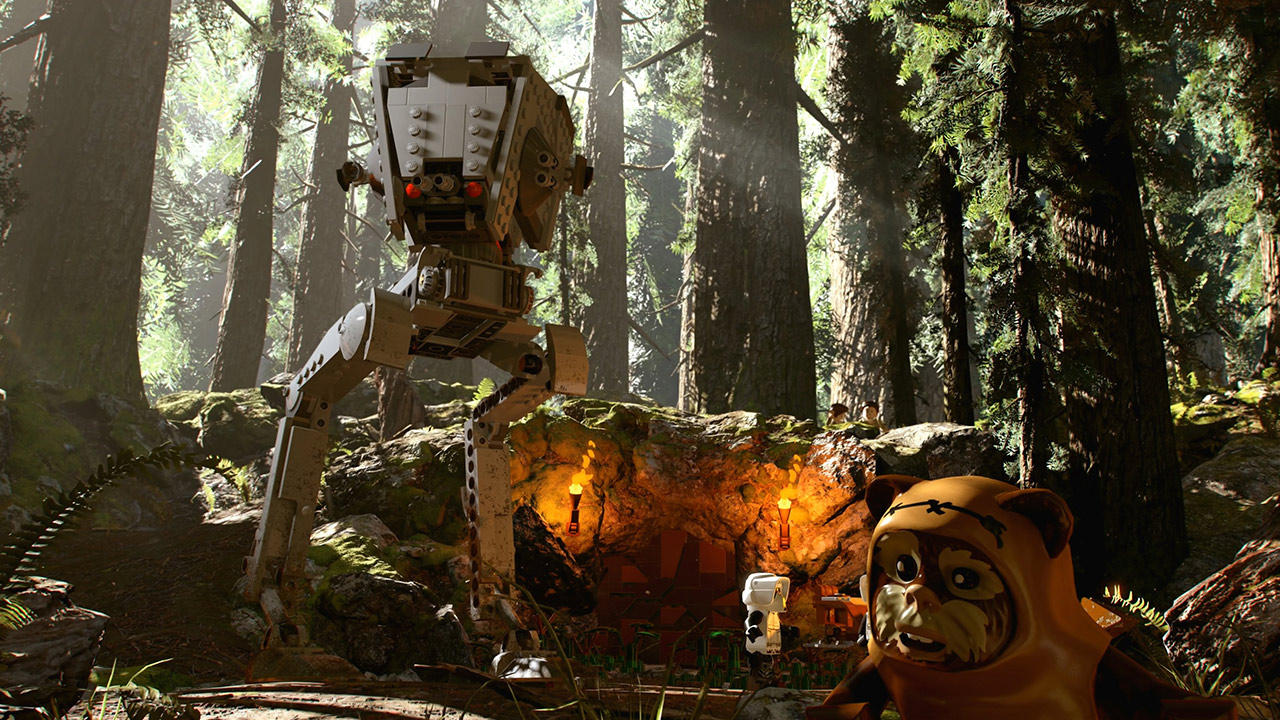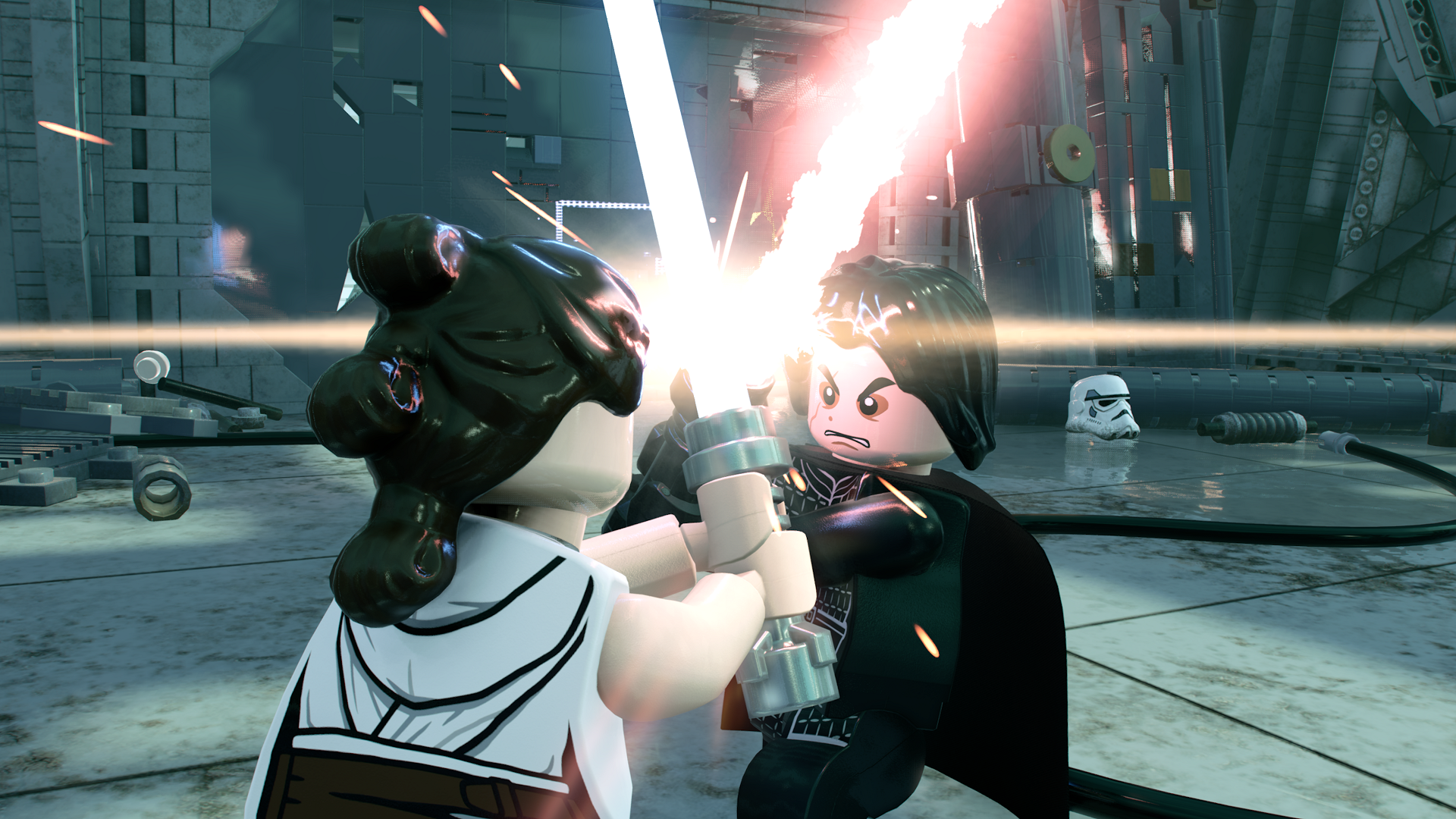The Star Wars franchise gave rise to the existing LEGO video game formula as we know it. The first game released in 2005 and followed the prequel trilogy, while a 2006 follow-up recounted the events of the original trilogy in blocks and studs.
LEGO Star Wars: The Skywalker Saga is a full-blown remake of 2007’s compilation that collected those two games into The Complete Saga. The difference now is that it includes films from the Disney era and overhauled gameplay.
With that in mind, The Skywalker Saga should be an easy recommendation to Star Wars and LEGO fans alike. Unfortunately, it seems more content with emulating industry trends to the detriment of what made the original entries click.
Lego Star Wars: The Skywalker Saga Review — One Step Forward, Two Steps Back
Most fans are likely familiar with the much-advertised combat overhaul in The Skywalker Saga. Both ranged and melee combat systems have been retooled for the better. The tweaks make this entry feel so much more satisfying than any other LEGO game.
The light auto-aim gunfire is replaced by contemporary over-the-shoulder free aiming. This expanded level of freedom is most obvious when engaging enemies: helmets can fly off or spin, disorienting enemies in the process, and firing at a trooper’s legs can cause them to faceplant, taking them out of the fight if even momentarily.
The original LEGO Star Wars games are still button mashers, featuring a single attack button. Though that doesn’t automatically signify low-level combat — extreme combos derive from delayed strings and techniques like jump canceling — melee combat in those games is as basic as can be.
By contrast, LEGO Star Wars: The Skywalker Saga features a competent, branching combo system that makes use of three attack buttons, including a dedicated launcher. There’s even a fleshed-out dodge roll system for both melee and ranged fighters, adding an extra layer of user control to engagements.
This is (Not) the Way

LEGO Star Wars‘ strength has always been its focus on level design and puzzles. The moment-to-moment gameplay and combat encounters have always been the series’ weakest links (which have been rectified wholesale here). Aside from the clear love for the Star Wars property, games like LEGO Star Wars and LEGO Indiana Jones have succeeded because of intricate level design and puzzle-solving.
There are brain teasers and cryptic unlockables you don’t know about until after unlocking free play mode, and the critical path is no less engaging. Simply playing through the main story of previous LEGO Star Wars game feels satisfying because the puzzles are genuinely well-constructed, smoothly integrated into environments and boss battles. You are constantly solving puzzles that straddle the line between simplicity and complexity.
Not so here. Instead of striking a balance between thoughtful simplicity and complexity, The Skywalker Saga takes the kitchen sink approach to game design, where more hours (apparently) equate to a better game. The vast majority of content exists within open-world hubs, many of which are quite expansive and even feature interiors. But even with such breadth, it fails to compete with its predecessors.
It’s not long before the typical open-world conventions begin to crop up, with most hubs having a predictable, if LEGO-traditional, set of puzzle types (shoot targets within a time limit or destroy a specific number of items throughout the location). In other ways, things are so straightforward that any sense of satisfaction dissipates quickly within the repetition.
For example, a typical kyber brick puzzle simply requires reaching a certain elevation on a structure or object, which is only accessible by swinging or climbing along poles and handholds with a specific class. The platforming afterward, whether it be with a Jedi or Bounty Hunter, is as automated as most modern action-adventure games. There isn’t much at all to test your skills or convey a sense of accomplishment.
Focus Determines Reality

As a standalone experience, the core experience is a serviceable retelling of the Saga’s events. The various character classes, from Scavengers to Heroes to Villains, each offer their own set of tools that alter the moment-to-moment experience, whether it’s the ability to glide, use mind tricks, or interact with specific consoles to reach new areas.
Even within those same classes, Traveller’s Tales went to great lengths to differentiate characters as much as possible. With a base roster of 380 characters, there is still a surprising amount of distinction. Yoda, Obi-Wan Kenobi, Luke Skywalker, Rey Skywalker, Kit Fisto, and Qui-Gon Jinn all have unique combat animations despite falling under the Jedi class, for example. The attention to detail is commendable.
There’s also a genuine sense of wonder and novelty attached to seeing each hub and linear level in the highest fidelity we’ve ever seen in a LEGO game. There are even certain scenarios, such as the battle for Endor, which can be genuinely exciting because of how good the core combat is.
Unfortunately, there’s also a sense that the story suffers at the hands of the open-world structure, where so much time was invested in creating respectful representations of iconic locations with so many points of interest.
The scope of story missions feels significantly reigned in when compared to the titles The Skywalker Saga pulls from. Boss fights once fused combat, with puzzle-solving and platforming equally. Those same bosses in LEGO Star Wars: The Skywalker Saga largely rely on combat, with only a small smattering of anything else. Further, some story missions feel like nothing more than fetch quests that have you running from one location to another between those boss fights.
To its credit, The Skywalker Saga is still a LEGO game. That means the dopamine rush of collecting minikits, filling meters, acquiring studs, and unlocking characters and ships remains. These games were built around the concept of replayability, filled with nooks and crannies that only accessible with specific characters.
Even if the sense of accomplishment isn’t quite there, filling out the rosters of content is still fulfilling. Regardless of what you’re doing, you’re actively working toward unlocking something. There’s always something within your grasp.
Lego Star Wars: The Skywalker Saga Review — The Bottom Line
Pros
- Respectful to the license, with so many characters within the same classes featuring unique combat animations.
- Combat is legitimately great for a LEGO game.
- Tons of content.
Cons
- Unfortunately, a large chunk of that content isn’t great.
- Reigned in scope for story missions.
- Open-world design takes precedent over more carefully crafted scenarios.
While fans finally have good combat in a LEGO Star Wars game, competent action can only stretch the experience so far. With its overreliance on open-world fluff, which de-emphasizes the considered design of older games, LEGO Star Wars: The Skywalker Saga feels like one step forward and two steps back.
In the process of chasing what feels like industry trends and ticking boxes for content, the core story mode lacks the direction it used to. Even if you don’t have the basis for comparison, the content here feels too heavily weighted in favor of unremarkable open-world checklists.
[Note: Warner Bro. Interactive Entertainment provided the copy of LEGO Star Wars: The Skywalker Saga used for this review.]








Published: Apr 6, 2022 01:00 pm